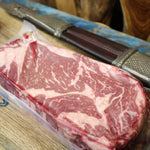
Chapter 13: Longhorn
In the expansive landscapes of the American West, where vast prairies meet endless horizons, Longhorn cattle graze—a breed that embodies the spirit of the wild frontier and the enduring legacy of American ranching. With their distinctive long, curved horns and adaptability to diverse environments, Longhorns stand as iconic symbols of American heritage and resilience.
Pioneering Roots and Distinctive Features:
Longhorn cattle have deep roots in American history, tracing back to the days of pioneering and cattle drives. Their origins can be linked to Spanish cattle brought to the Americas in the 15th century. Over centuries, these cattle adapted to the rugged conditions of the American West, giving rise to the breed we now know as Longhorn.
The most iconic feature of Longhorn cattle is, undoubtedly, their long, sweeping horns. These horns, which can span impressive widths, served as both a natural defense mechanism and a symbol of the breed's resilience in the harsh conditions of the frontier.
Adaptability to Diverse Environments:
Longhorn cattle's adaptability to different environments played a crucial role in the expansion of ranching across the American West. From the arid deserts of Texas to the high plains of Wyoming, Longhorns showcased their ability to thrive on sparse vegetation and withstand the challenges of a nomadic and unpredictable lifestyle.
Their adaptability was further demonstrated during the era of cattle drives, where Longhorns endured long journeys across vast distances. The breed's hardiness and endurance made them invaluable assets to cattle ranchers and pioneers seeking to establish a foothold in the untamed West.
Cultural Significance and the Wild West Legacy:
Longhorn cattle are deeply woven into the cultural fabric of the American West. They played a central role in the era of cattle drives, where herds of Longhorns were guided by cowboys along trails like the Chisholm Trail. This chapter of American history not only shaped the cattle industry but also contributed to the mythos of the Wild West.
Beyond their practical contributions, Longhorns have become enduring symbols of American ranching heritage. Their distinctive appearance, with horns that evoke the spirit of the frontier, is iconic in representations of the American West in literature, art, and popular culture.
Fascinating Facts:
-
Longevity: Longhorn cattle are known for their longevity, often exceeding the lifespan of other cattle breeds. Some Longhorns have been documented to live well into their twenties, showcasing their robust health and resilience.
-
Natural Resistance: Longhorns possess a remarkable natural resistance to certain diseases and parasites. This innate resilience contributed to their survival in the challenging environments of the Wild West, where veterinary care was limited.
-
Unique Horn Patterns: The horns of Longhorn cattle exhibit a wide range of shapes and patterns. Some curve gracefully, while others may have multiple twists. Each Longhorn's horn configuration is unique, adding to the individuality of the breed.
Conservation Efforts and Heritage Preservation:
-
Heritage Conservation: Recognizing the historical and cultural significance of Longhorn cattle, there are ongoing efforts to conserve and preserve the breed's unique traits. Heritage conservation programs aim to maintain the genetic diversity and historical authenticity of Longhorn cattle.
-
Educational Initiatives: Longhorns are often featured in educational initiatives that aim to showcase their role in American history. Visitors to ranches and educational centers have the opportunity to learn about the breed's contributions to the development of the American West.
Conclusion: Longhorn—Living Legends of the American Frontier:
As Longhorn cattle graze on the vast prairies of the American West, they stand as living legends of the frontier. From their iconic horns to their enduring adaptability, Longhorns represent not just a breed of cattle but a symbol of the resilience, courage, and pioneering spirit that defined the era of the Wild West. In their presence, the echoes of cattle drives and the untamed landscapes of the American frontier come to life, reminding us of a chapter in history where Longhorns were the true icons of the vast and rugged West.
















